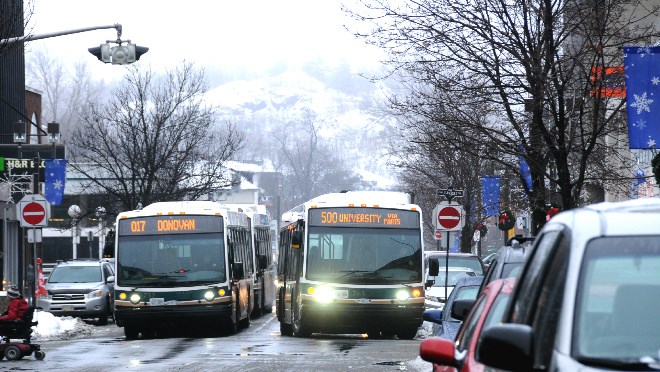It costs about $18 million to operate Greater Sudbury's transit system each year, members of the operations committee were told Monday, while fare and other revenue totals about $8 million.
And with ridership flat over the last eight years, the city is hoping some technological advances will help them better target and time buses to where there's more demand.
“The goal is to improve the transit system,” said Roger Sauvé, the city's director of transit.
For example, new buses automatically count the number of riders, giving staff real-time information about where demand is, and what routes aren't performing as well.
Sauvé said the guideline is to have 44 per cent cost recovery on the main routes, and 25 per cent cost recovery on commuter routes.
Ward 3 Coun. Gerry Montpellier wondered why so many people in his ward don't even have access to commuter routes, and instead must take transcabs, which they can only book 90 minutes ahead of time.
“I find it bizarre in a progressive city like Sudbury, you have 13,000 residents who are not served by the bus,” he said. “I'm dumbfounded by the whole thing, to be honest with you.”
Sauvé said transcabs are targeted to areas where population is so scattered because it's more cost effective to have people use transcabs. They save money because they are used only when called for he said.
“Once you set fixed routes, you're paying for those kilometres whether people use it or not,” he said.
Committee Chair Bob Kirwan asked why more people aren't using the bus.
“Why has ridership seemed to have flatlined over the last eight years?” he asked.
Sauvé said there was a dip in ridership in 2009-2010, and they have been trying to get those customers back. Factors include fare structures, routes and frequencies of pickups.
“Those are all items we look at to see if we can provide better options for our customers,” he said.
He said the department is developing a map that shows such things as where people work, and whether they have appropriate service to those areas.
Montpellier asked whether transit has looked at something like a park and drive — where people drive to a parking lot to catch the bus.
“Have we ever looked at something like that?”
They have looked at it, Sauvé said, but to be successful, the route has to be direct, rather than stopping in other communities.
“Park and ride would have to be a very direct route to attract customers,” he said.
They could possibly add another bus, but that would cost more money.
But Ward 12 Coun. Joscelyne Landry-Altmann said she has been pushing for a pilot project that would create a park and ride between the Valley and downtown.
“Is there any way you can see we can expedite this?”
In the end, the committee voted to make the pilot a budget option for 2016, which means it would need the support of majority of council to pass.
Join Sudbury.com+
- Messages
- Post a Listing
- Your Listings
- Your Profile
- Your Subscriptions
- Your Likes
- Your Business
- Support Local News
- Payment History
Sudbury.com+ members
Already a +member?
Not a +member?
Sign up for a Sudbury.com+ account for instant access to upcoming contests, local offers, auctions and so much more.
